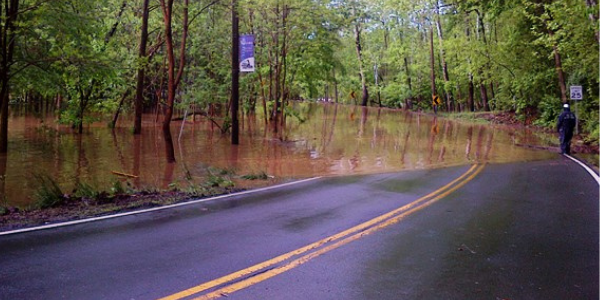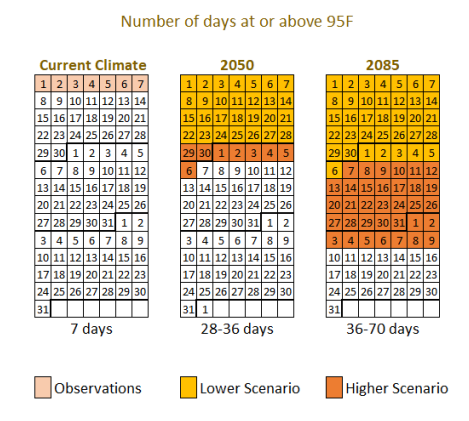
Quick Summary
- Newly published report details potential projected climate conditions for our community.
- Heat and precipitation averages (and severity) expected to increase over the next several decades.
How has our climate changed in Fairfax County? What will the future climate look like?
Our new Resilient Fairfax Climate Projections Report digs into available data and climate models to help provide answers, which reveal potential climatic shifts for the county in the coming decades. According to the report, which was supplemented by a study completed by the NASA DEVELOP National Program, Fairfax County may see significant shifts in temperature, precipitation and the frequency and intensity of severe weather events in the coming 30 to 50 years.
Climate vs. Weather
“Climate” is often confused with “weather.” Climate refers to long-term statistical averages of 20 years or more, while weather refers to day-today conditions. Climate models provide projections of how the future climate may change.
KEY FINDINGS
Key findings of the new climate projections report and the NASA DEVELOP report include:
1. Hot days above 95 degrees
Very hot days at or above 95 degrees Fahrenheit are projected to rise significantly from seven days per year currently to more than 36 days per year in 2050. By 2085, it is likely that most days of the summer will reach 95 degrees.
2. Consecutive hot days above 95 degrees
Historically, the maximum number of consecutive days at or above 95 degrees Fahrenheit stands at 2.6 per year. According to one scenario played out in the climate projections report, Fairfax County can expect to see up to 22 consecutive days at or above 95 degrees per year by 2085.

3. Hotter spots in urbanized areas
The NASA DEVELOP report found that the hottest spots in the county are densely urbanized with land surface temperatures as much as 47 degrees Fahrenheit higher than those in undeveloped forest reference areas.
4. Intense precipitation and inland flooding
Along with changes in temperature, Fairfax County is projected to experience more intense precipitation events, which will amplify inland flooding.
5. More severe thunderstorms
Currently, Fairfax County sees between 37 and 45 days of thunderstorms per year, on average. The climate projections report indicates that an overall increase in the frequency of severe thunderstorms is to be expected in the county.
WHAT’S NEXT
The climate projections report is the first piece of a full-scale climate adaptation and resilience plan that is currently in development as part of the Resilient Fairfax initiative. In the coming months, we will release research on where and how our community is most vulnerable to climate hazards, and an audit of existing county policies, plans and programs that can help address resiliency.



 SIGN UP FOR DAILY EMAIL HEADLINES
SIGN UP FOR DAILY EMAIL HEADLINES